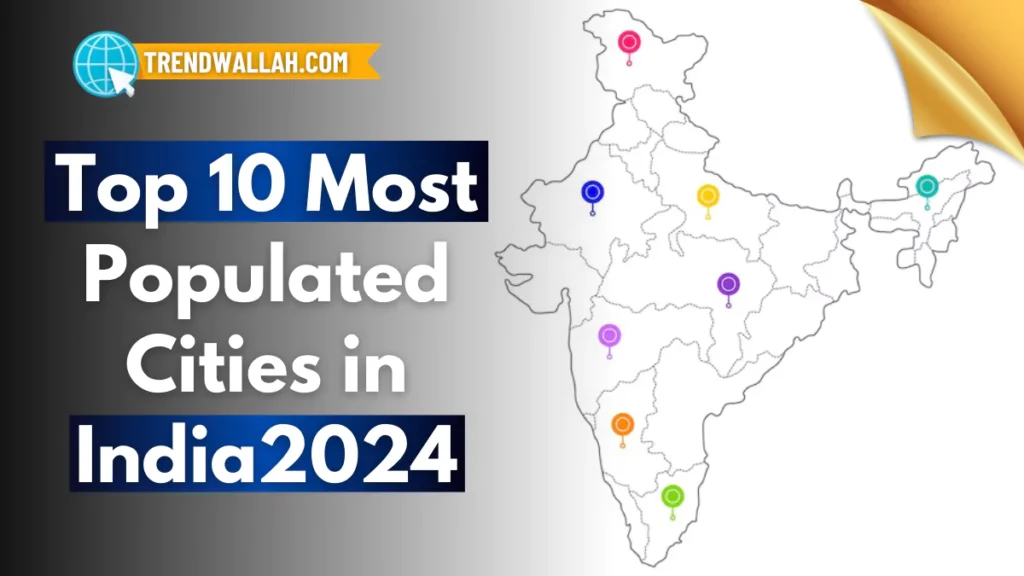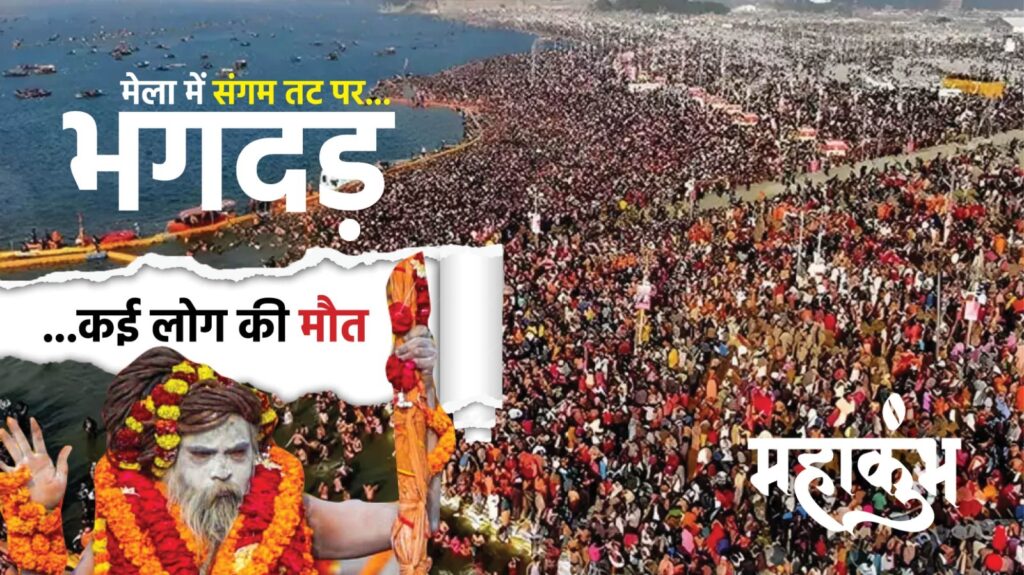
India, with a population of over 1.4 billion people, is home to some of the most densely populated cities in the world. The rapid urbanization and growing opportunities in major cities have led to large-scale migration from rural areas. In this article, we will explore the top 10 most populated cities in India as of 2024 and provide insights into the factors contributing to their growth.
Why Population Growth Matters
Urban population growth is significant for a country’s development, but it also presents challenges. With increasing populations, cities must handle more demands for housing, transportation, education, healthcare, and job opportunities. Understanding which cities are the most populated can give insight into the challenges and potential future developments in India’s urban landscape.
Top-10 Most Populated Cities in India 2024: Detailed List
India’s top-10 most populated cities have grown due to both natural population growth and migration from rural areas. Below is a detailed table of these cities.
| Rank | City | State/Union Territory | Population |
| 1 | Delhi | New Delhi | 33,807,403 |
| 2 | Mumbai | Maharashtra | 21,673,570 |
| 3 | Kolkata | West Bengal | 15,570,786 |
| 4 | Bangalore | Karnataka | 14,008,262 |
| 5 | Chennai | Tamil Nadu | 12,053,697 |
| 6 | Hyderabad | Telangana | 11,068,877 |
| 7 | Ahmedabad | Gujarat | 8,854,444 |
| 8 | Surat | Gujarat | 8,330,528 |
| 9 | Pune | Maharashtra | 7,345,848 |
| 10 | Jaipur | Rajasthan | 4,308,510 |
1. Delhi: The Most Populated City in India
Delhi, with a population of over 33.8 million people, is the most populated city in India as of 2024. It serves as the nation’s capital and is the political heart of the country.
Key Features of Delhi:
- Cultural Hub: Delhi is known for its diverse population, with people from all parts of India living in the city. The city has a mix of modern architecture and ancient landmarks like the Red Fort, Qutub Minar, and India Gate.
- Economic Powerhouse: The city’s economy is one of the largest in India, driven by sectors like IT, telecommunications, and manufacturing. It also has a growing real estate sector.
- Challenges: Delhi struggles with overcrowding, air pollution, and traffic congestion, all of which have been made worse by the city’s rapid population growth.
2. Mumbai: The Financial Capital
Mumbai, the second most populated city, is home to over 21.6 million people. It is India’s financial capital, hosting major financial institutions like the Reserve Bank of India (RBI), the Bombay Stock Exchange (BSE), and numerous multinational corporations.
Key Features of Mumbai:
- Entertainment Hub: Known for Bollywood, Mumbai is the center of India’s entertainment industry, attracting aspiring actors, filmmakers, and artists from across the country.
- City of Opportunities: Mumbai has always been a city that promises economic opportunity. Many people from rural areas move to Mumbai in search of jobs and a better standard of living.
- Challenges: Like Delhi, Mumbai faces overcrowding, poor public infrastructure, and housing shortages. Slums are a common sight in many parts of the city, with Dharavi being one of the largest slums in Asia.
3. Kolkata: A Blend of Tradition and Modernity
Kolkata, with a population of 15.5 million, is known for its rich cultural heritage and intellectual scene. It is the third most populated city in India and a major center for art, culture, and education.
Key Features of Kolkata:
- Cultural Influence: Kolkata is famous for its literature, art, music, and festivals. The city hosts the famous Durga Puja festival every year, which attracts millions of people.
- Economic Significance: The city is a key commercial hub in eastern India, with a strong presence in sectors like jute, textiles, and tea.
- Challenges: Kolkata struggles with issues like traffic congestion, poor waste management, and outdated infrastructure.
4. Bangalore: India’s IT Hub
Bangalore, with a population of 14 million, is known as the Silicon Valley of India due to its booming IT industry. It is one of the fastest-growing cities in India, thanks to its job opportunities in technology.
Key Features of Bangalore:
- Tech Industry: Home to major IT companies like Infosys, Wipro, and TCS, Bangalore has become the go-to city for tech professionals.
- Green Spaces: Despite its rapid urbanization, Bangalore is known for its parks and green spaces, including Cubbon Park and Lalbagh Botanical Garden.
- Challenges: The city faces growing traffic issues, rising cost of living, and water scarcity due to the increase in population.
5. Chennai: Industrial and Educational Hub
Chennai is the capital of Tamil Nadu, with a population of 12 million. It is a major industrial, commercial, and cultural center in southern India.
Key Features of Chennai:
- Automobile Industry: Chennai is often referred to as the “Detroit of India” because of its large automobile manufacturing industry.
- Educational Institutions: The city is home to many prestigious educational institutions like the Indian Institute of Technology Madras (IIT Madras).
- Challenges: Like many other large cities, Chennai faces issues like water shortages, traffic jams, and environmental degradation.
Urban Growth and Migration in India
The fast-growing populations of India’s cities are driven by both natural population growth and rural-to-urban migration. Many people leave rural areas to seek better employment, education, and healthcare in urban centers. While urbanization brings opportunities, it also creates challenges such as overcrowding, housing shortages, and strain on public services.
Related Event: India’s Smart City Mission
In response to the rapid urban growth, the Indian government has launched initiatives like the Smart Cities Mission, aimed at improving the infrastructure and quality of life in urban areas. The goal is to make 100 cities across the country more sustainable and livable by introducing smart technologies in areas like energy, water, and waste management.
Read- Most Populated Countries in the World
Also Read Latest Current Affairs 2024
Delhi is the most populated city in India in 2024, with a population of over 33 million people.
Mumbai is considered the financial capital because it houses major financial institutions, stock exchanges, and the headquarters of many companies.
The rapid population growth is mainly driven by rural-to-urban migration and the natural growth of the population within cities.
Bangalore is known as the Silicon Valley of India because of its large IT industry and tech companies.
Challenges include overcrowding, housing shortages, traffic congestion, and environmental pollution.
